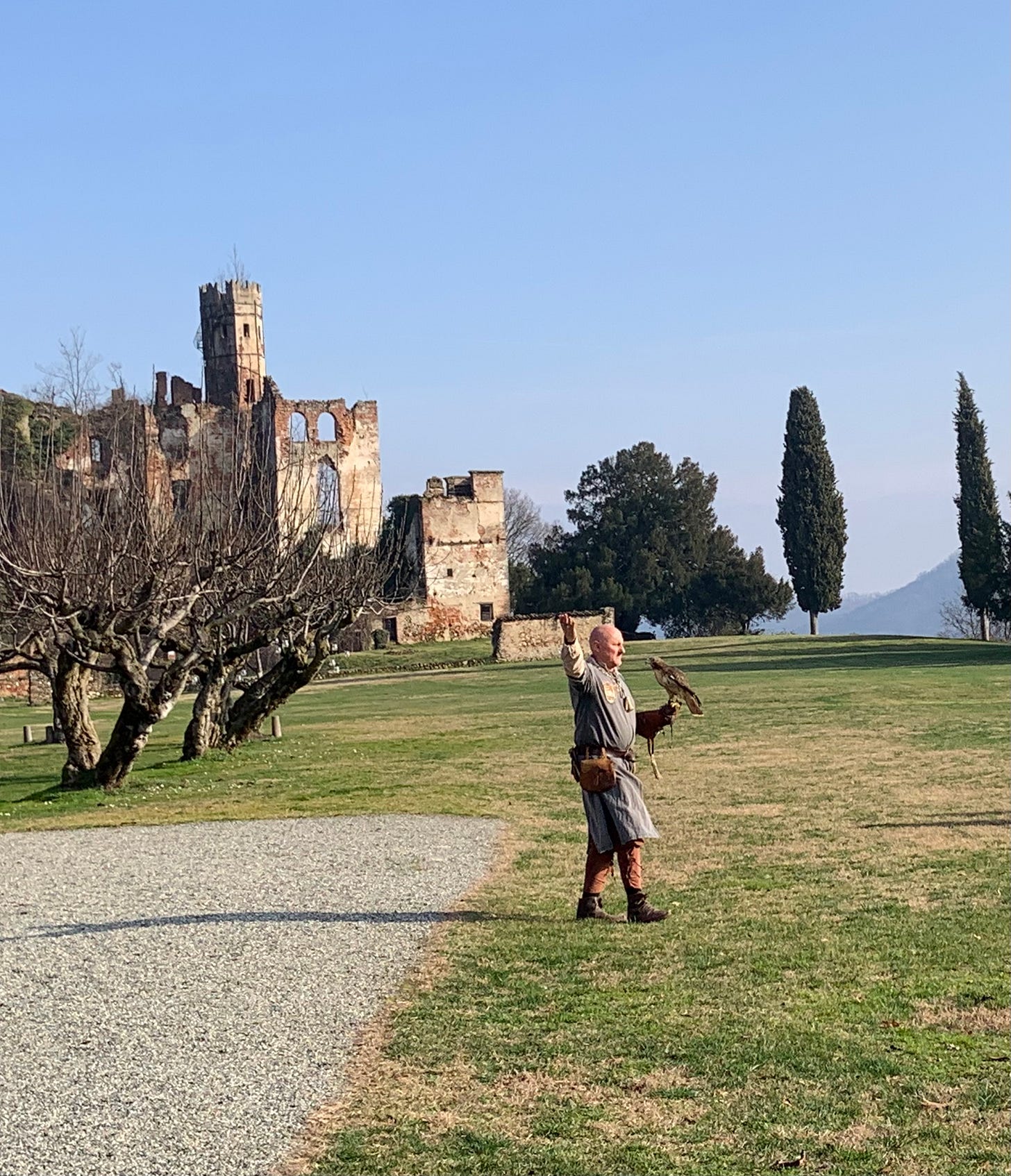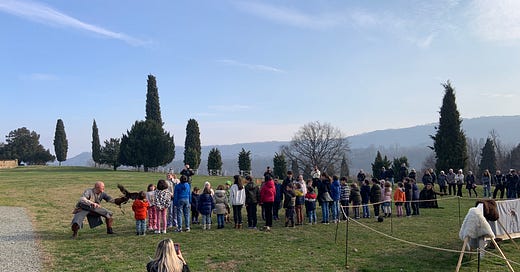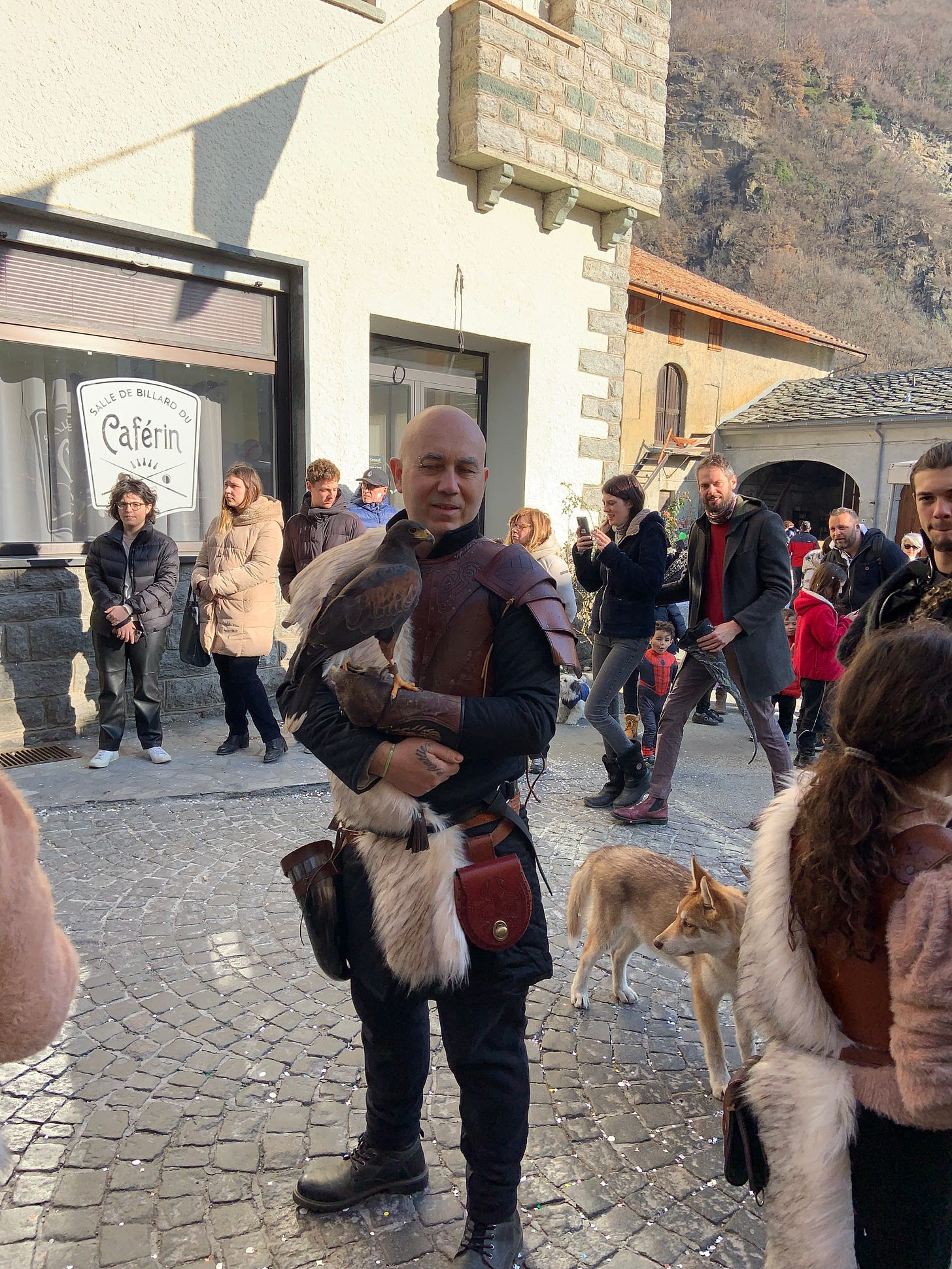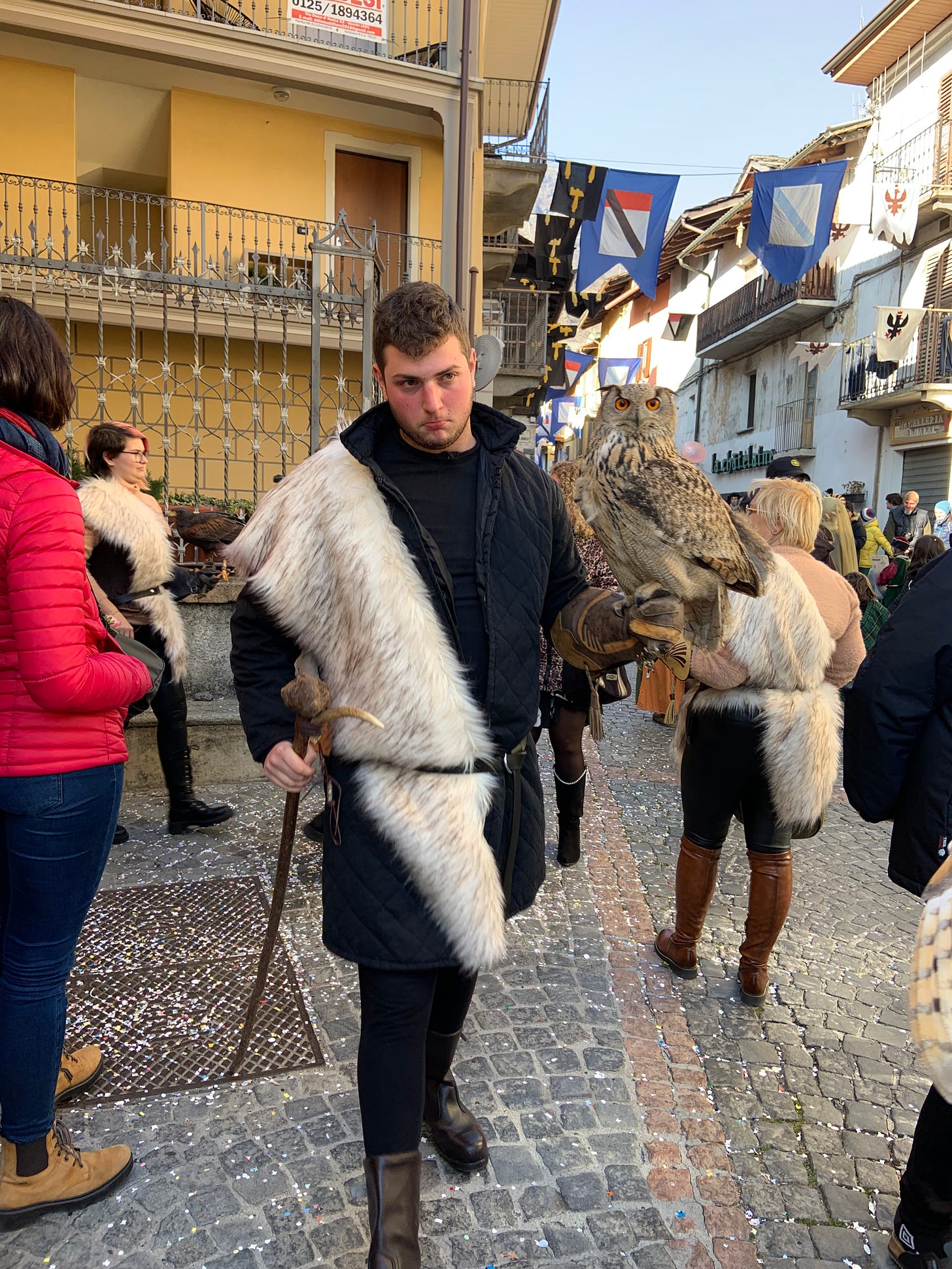Wings of Love: The Timeless Romance of Falconry
A Historical Overview of The Ancient Art of Falconry
During carnivals and other celebrations in Italy, reenactors with hunting birds often participate. It was so interesting, and I wanted to learn more about this art.
Here are some examples of photos I took.
I have had several close encounters with these birds. Once, while walking down to the city, I saw a common buzzard falling from the rock. It was not well. I managed to catch it and bring it home, where people from WWF came to catch it. I remember how it grabbed my arm with its claws. They seemed more significant than themselves.
A bird of prey used to come to us here at night (many times) — probably a large one. It was definitely after Timur, my Maine Coon cat. The bird came many times and cried near the terrace. Maybe Timur was occupying his territory — a competing carnivore. But the terrace is covered with netting. Timur probably wanted to catch it: I felt something was happening that night, but I only saw a shadow of wings when I arrived. I think they were about a meter large. The fight was serious: Timur had a scratch on his nose. Did that bird put his paw in the hole in the netting? I don't know.
Once, driving through the woods on a cold but sunny morning after a snowy night, I saw 5 (FIVE!) different birds of prey hunting mice in a sunny patch of ground. One of them was very big!
Another time, I was walking in the mountains near an ancient shrine and towards the woods when a giant nocturnal bird of prey that I thought was an eagle owl flew right over my head! It sat on a tree before me, looked at me for a while, and then went into the woods! I was shocked!
I had many encounters with these birds. So, I wanted to learn more about them. Here is what I found:
Falconry, the art of training birds of prey to hunt, boasts a rich history that traces back thousands of years. Evidence suggests that this practice began as early as 2000 BC in ancient Mesopotamia and Central Asia, marking it as one of the oldest hunting traditions known to humanity. Over the centuries, falconry has evolved, intertwining with cultural, social, and ecological narratives across the globe.
Historical Significance
Throughout history, falconry was not merely a hunting method but a symbol of status and nobility. In medieval Europe, the type of bird their social standing indicated a person kept. The gyrfalcon, the largest falcon species, was a prized possession of royalty, while the more common kestrel was accessible to the lower classes. This distinction underscored the importance of falconry as a pastime among the elite, with its practice serving as a reflection of power and privilege.

Notable figures such as Frederick II, Holy Roman Emperor, played a crucial role in advancing falconry knowledge. His seminal work, “De Arte Venandi cum Avibus” (The Art of Hunting with Birds), provided comprehensive insights into the techniques and ethics of falconry. The text remains a cornerstone of falconry literature, influencing generations of falconers. Similarly, Marco Polo's travels revealed falconry's popularity in the courts of Kublai Khan, illustrating its widespread appeal across different cultures.
Birds of Prey in Falconry
Various species of birds have been utilized in falconry, each chosen for its unique hunting abilities and characteristics. Male falcons, referred to as “tiercels,” are typically about a third smaller than their female counterparts, often making them more agile hunters. Among the most common birds used in falconry are:
Gyrfalcon: The largest and most prestigious of the falcon species, often associated with royalty.
Peregrine Falcon: Renowned for its incredible speed and agility, it is a favored choice for many falconers.
Kestrel: A smaller falcon popular among novice falconers due to its manageable size and ease of training.
Harris Hawk: Unique for its social hunting behavior, often hunting in packs, which makes it particularly popular in modern falconry.
Modern Falconry and Conservation
Today, falconry is heavily regulated to ensure the conservation of birds of prey and their habitats. Laws vary by country but generally include licensing requirements, strict controls on capturing and breeding birds, and welfare standards to protect these magnificent creatures. These regulations reflect a growing awareness of the ecological importance of birds of prey and the need to preserve their populations for future generations.
Falconry remains a cherished practice for enthusiasts worldwide. It blends tradition with modern conservation efforts as practitioners continue to hone their skills and deepen their understanding of these remarkable birds. The ancient art of falconry endures, connecting people with nature profoundly and meaningfully.
Falconry is a testament to human ingenuity, the bond between man and bird, and a crucial aspect of our cultural heritage and environmental stewardship. As we look to the future, the ongoing commitment to ethical practices and conservation will ensure this ancient tradition thrives.
Interesting articles I found to read more about falconry:
Falconry, a living human heritage
Ancient & Medieval Falconry: Origins & Functions in Medieval England







